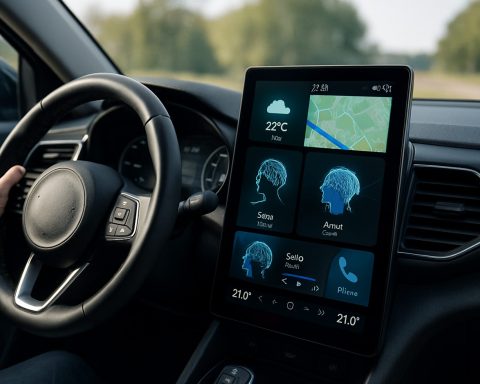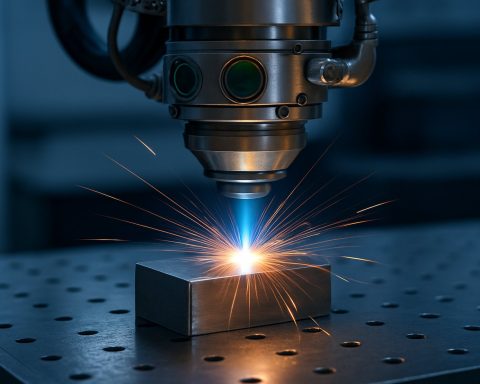- Kia enters the competitive Australian ute market with its new model, the Tasman, emphasizing a 2.2-litre four-cylinder turbo-diesel engine.
- Despite the electric vehicle trend, over 80% of Australian ute buyers prefer diesel, influencing Kia’s market strategy.
- The Tasman seeks to gain a substantial market share by challenging dominant models like the Ford Ranger and Toyota HiLux.
- Kia plans to eventually introduce hybrid and electric variants, aligning with future emissions regulations and market trends.
- Kia Australia’s approach balances current consumer preferences with preparation for an electrified automotive future.
- The Tasman highlights Kia’s dual focus on present market demands and adaptability to future shifts in the auto industry.
Kia is gearing up to make a bold entrance into the fiercely competitive Australian ute market with its upcoming Tasman. While the automotive world seems to be swept up in a tidal wave of electrification, Kia stands its ground with a robust focus on a classic powerhouse: the diesel engine. As the Tasman’s debut looms, slated for this July, the brand’s strategic choice to lead with a 2.2-litre four-cylinder turbo-diesel engine is a calculated move that speaks volumes about customer demand and market dynamics.
Diesel Dominance Amidst Electric Dreams
Despite the chatter around electric and hybrid vehicles, the reality on the ground is clear. In Australia, a significant majority of ute buyers—over 80%—still rely on the steadfast reliability of diesel engines. Kia recognizes this entrenched preference as a critical factor for entry into the market. Roland Rivero, the head of product planning for Kia Australia, emphasized the importance of getting the diesel option right from the start, underscoring the necessity of meeting customer expectations in a market largely dominated by diesel’s prowess.
The strategy is not without its long-term vision. Kia Australia’s CEO, Damien Meredith, noted that while the focus might be on the present diesel offering, the brand is actively laying the groundwork for an electrified future. The overarching plan is to transform the Tasman into a versatile player that can adapt to evolving market trends and stricter emissions regulations slated to come with the New Vehicle Efficiency Standard.
The Long Game: Kia’s Ambitious Plans
Kia is not just about joining the market but about shaking it up. The Tasman aims to capture a significant slice of a segment currently dominated by heavyweights like the Ford Ranger and Toyota HiLux, which together account for half of all ute sales in Australia. By setting sights on capturing 20,000 sales from these established players, Kia is playing a strategic long game, one that leverages immediate consumer preferences while setting the stage for an inevitable shift towards hybrid and electric variants.
Industry shifts have seen a 6.3% dip in ute sales in the early months of 2025, yet the segment remains robust with projections exceeding 200,000 annual sales. Meredith points out the unpredictable shifts in consumer preferences, having witnessed large sedans give way to compact hatches and then to utes. It’s this unpredictability that Kia is banking on, with Meredith casting aside doubts that a light commercial vehicle (LCV) could ever top the sales charts again.
Embracing Change with a Firm Foundation
The Tasman is arriving at a pivotal moment, one where the landscape of the auto industry is poised for change. Kia’s current diesel-centric strategy provides a stable footing—an essential base from which to explore future innovations. Even as new players like BYD and MG make their bids, Kia’s recognition of what works today underpins their future-ready approach.
In this rapidly evolving market, the Tasman represents Kia’s commitment to both present and future, blending the reliability of diesel with the promise of an electrified horizon. For car buyers, it’s a vivid reminder that while the future beckons with new possibilities, there’s still immense value in the enduring and familiar.
Unveiling the Kia Tasman: Diesel Dominance Meets Future-Ready Innovation
The Competitive Landscape: Kia Tasman’s Diesel Dominance
While electric vehicles dominate global headlines, the Australian ute market tells a different story. Kia’s decision to introduce the Tasman with a 2.2-litre four-cylinder turbo-diesel engine is a nod to the 80% of Australian ute buyers who prefer diesel engines for their proven reliability and performance. This strategic choice demonstrates Kia’s commitment to meeting existing market demands, while laying groundwork for future advancements in vehicle technology.
How-To: Maximize the Benefits of Diesel Engines in Utes
1. Regular Maintenance: Ensure timely oil changes and filter replacements to keep the diesel engine running smoothly.
2. Fuel Quality: Always use high-quality diesel fuel to prevent engine issues.
3. Preventive Checks: Regularly inspect the turbocharger and exhaust system to detect issues early.
4. Defensive Driving Habits: Avoid aggressive driving and excessive idling to maintain engine health.
Market Forecasts & Industry Trends
Despite a projected dip in ute sales by 6.3% in early 2025, the segment is expected to rebound, with forecasts predicting over 200,000 unit sales annually. Kia aims to capture 20,000 of these, positioning the Tasman as a viable competitor against stalwarts like the Ford Ranger and Toyota HiLux.
Real-World Use Cases
The Kia Tasman is perfectly suited for both urban and rural driving conditions in Australia. Its diesel engine is designed for longevity and efficiency, ideal for tradies (tradespeople), adventure seekers, and families needing a reliable ute for towing and hauling.
Security & Sustainability: Navigating Future Regulations
Kia is actively planning an electrified variant of the Tasman in response to impending New Vehicle Efficiency Standards in Australia. This demonstrates Kia’s proactive approach in balancing current demand with future regulatory and environmental considerations.
Insights & Predictions: The Future of the Ute Market
– Electrification on the Horizon: As electric vehicle infrastructure expands, consumer interest in hybrid and electric utes is expected to grow.
– Market Shifts: Continued evolution in consumer preferences could see a resurgence in light commercial vehicles at the top of the sales charts.
Pros & Cons Overview of the Kia Tasman
Pros:
– Proven reliability with diesel technology.
– Strong market positioning against leading competitors.
– Preparations for a future electrified model.
Cons:
– Limited appeal for consumers interested in electric vehicles immediately.
– Potential challenges adapting to faster-than-anticipated shifts towards electrification.
Actionable Recommendations: Choosing the Right Ute
For potential buyers, it’s crucial to align your vehicle choice with your long-term needs and consider factors like towing capacity, fuel efficiency, and potential for resale value. Kia’s Tasman offers a robust option for those with immediate diesel needs while staying open to future hybrid and electric options.
Conclusion
The Kia Tasman embodies a strategy deeply rooted in current market realities yet agile enough to embrace future vehicular trends. As the brand prepares for the Tasman’s launch, prospective ute buyers should consider not just current needs but future aspirations and regulatory landscapes.
For more about Kia’s innovations and future models, visit the official Kia website.










